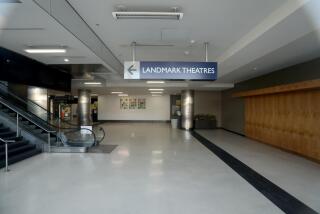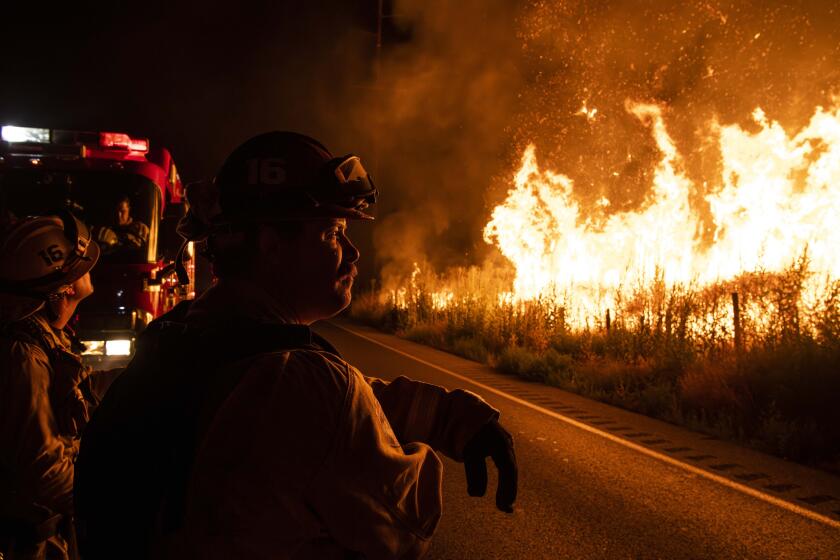Valley’s First AIDS Services Center to Open : Van Nuys: A mini-mall storefront will provide case management, mental health aid, support groups in English and Spanish and a food bank.
- Share via
Eleven years after the AIDS epidemic began in the United States, the San Fernando Valley’s first AIDS services center will open Sept. 15 in a Van Nuys mini-mall.
The Valley HIV/AIDS Center, funded by federal and city grants, will provide case management for people with AIDS, mental health services for those infected with HIV, support groups in English and Spanish, a food bank and referrals to other services.
There have been 1,928 cases of acquired immune deficiency syndrome in the San Fernando, Santa Clarita and Antelope valleys since 1981, according to the Los Angeles County Department of Health Services.
“There have been plans in the works for years to get some kind of HIV center here, but in the meantime people had to drive over the hill to get what they need,” said Rene Seidel, who will be one of the three coordinators of the 1,500-square-foot center on Sherman Way near Hazeltine Avenue. The center will be operated by the Valley Community Clinic, Tarzana Treatment Center and the Silver Lake-based Being Alive organization.
“There has not really been a perception that AIDS is a problem in the Valley,” said Greg Britt, another of the coordinators. “It’s very much of a suburban area out here. Even the gay population is fairly closeted when compared to other parts of the city.
“It has taken a while for the Valley to come out and recognize that AIDS is going on in its own back yard.”
The project was set in motion by a consortium of 14 agencies that began meeting about a year and a half ago to coordinate HIV and AIDS care in the Valley. The chance to establish a center came through Being Alive, which offers support groups at Sherman Oaks Community Hospital and other Los Angeles locations. The hospital had offered Being Alive the use of a storefront it was taking off the hands of a doctor who was joining the hospital’s staff.
“It was a great opportunity, but we didn’t want to take on such a big space alone,” said Sean Kinney, also a center coordinator and Being Alive’s board president.
“I went to the consortium and said, ‘Here’s our chance for a center.’ ”
The consortium decided that the center should be a joint project, rather than forming a new agency to run it. “The last thing we needed was a new agency,” Britt said. “A new entity would have needed an executive director, its own funding sources, a board of directors.
“And it would have also undermined the collaborative spirit of these groups coming together.”
Valley Community Clinic, which is to provide the center with one-on-one case management of social services for people with AIDS, got a $95,000 grant from the federal fund created by the 1990 Ryan White Care Act. Tarzana Treatment Center got $45,000 from the same fund to provide mental health services. And the city gave $36,000 for the hiring of a program coordinator.
In April, shortly after the grants were won, the project came to a halt when Sherman Oaks Community Hospital’s deal with the doctor suddenly fell through. But the hospital found another storefront, paid for renovations and offered to subsidize $700 of the $1,200 monthly rent for at least two years.
“We are very involved in AIDS care and we help a number of AIDS organizations,” said David Levinsohn, executive director of the hospital. “Being Alive wanted a base in the Valley so that their clients here would not have to travel so far. We agreed to assist.”
Being Alive, a mostly volunteer organization of people infected with HIV, will provide volunteers to answer telephones and perform other jobs at the center. The group will also conduct a variety of support groups there.
An additional grant of $12,000 for furnishings and equipment came from AIDS Project Los Angeles, the Hollywood-based agency that is the largest AIDS services organization in Southern California. APLA will also use the center as a branch of its food bank and provide dental services through its clinic.
Although mental health services and support groups at the center will be open to large numbers of people infected with HIV, case management will be limited to 160 people with AIDS the first year.
“We know there are a lot more AIDS cases than that in the Valley,” Britt said, “but that is all our budget will allow.”
That budget is secure for only one year. The agencies involved are now trying to find funding for the second year and beyond. “The chance of getting Ryan White money again is low,” Britt said. “But we’ll do fund-raisers. And hopefully we’ll be able to locate a few private donors.”
More to Read
Sign up for Essential California
The most important California stories and recommendations in your inbox every morning.
You may occasionally receive promotional content from the Los Angeles Times.











